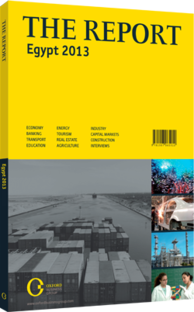OBG talks to Dasha Badrawi, Managing Director, Sixth of October Development and Investment Company (SODIC)

Interview: Dasha Badrawi
What sort of regulatory reform is needed to improve access to land in the near term?
DASHA BADRAWI: While we now use 6% of Egypt’s total land, it is estimated that a further 69% is habitable. That said, it still remains difficult to secure clean land for development. Typically, developers prefer to buy land from the government rather than from private landowners, whether by direct allocation or by auction. Government lands generally enjoy better infrastructure, more attractive payment terms and an absence of legal challenges. The government recently announced that it would be auctioning large plots of land for the first time in over two years, due in October 2013.
As developers, we don’t mind how land is issued, provided it is done in a fair and transparent manner. Direct allocation may be better in remote, undeveloped areas to attract established developers who can jump-start the process, whereas auctions may be more appropriate in mature development areas. More novel approaches such as joint ventures, where the local authority contributes the land and the developer contributes development funds and expertise, can help alleviate the prohibitive burden of financing all of the land costs.
How will the shift in residential activity from luxury units to more affordable housing evolve, and what number of Egyptians will require housing?
BADRAWI: This trend is driven by the demographics of the Egyptian population. There is a huge shortage of housing in the country, estimated at 1m units and growing by several hundred thousand per year. Over the last five years, the private sector has added about 80% of total supply, with some 80% of this aimed at the middle and lower income markets. The natural conclusion from this is that the private sector can fill the gap more efficiently than the public sector and should be encouraged to do so. The housing shortage will grow, as half the current population is under the age of 25.
Over the last few years, SODIC, as well as the market, has gradually adjusted towards changing market conditions, re-aligning inventory towards the upper middle-income market. At present, we have products that start at LE600,000 ($85,380) and our average unit price has shrunk significantly. This is not on account of price reductions, but due to smaller and more efficient products tailored to current market conditions.
In what way can the private sector be encouraged to increase its share of affordable housing units?
BADRAWI: In most business plans, the cost of land will be the largest cost component. It will always be difficult for developers to justify low and middle-income projects to their shareholders unless land is provided with appropriate conditions. We believe we have a formula for developing middle-income projects that can be successful at the right land prices and under the correct development conditions. Ideally, a robust mortgage market would also be in place, but in Egypt’s case this is not a pre-condition. High interest rates, large amounts of paperwork and so on has resulted in customers looking to the developer to provide financing.
To what extent are developers maintaining profit margins given rising costs and currency devaluation?
BADRAWI: Developers have had to become very agile and innovative in response to these challenges. Our industry has fared relatively well in the last two years in spite of the stagnant economy. In addition to the actual demand for new housing, people have continued to buy as a hedge against inflation and devaluation. This is not a new trend in Egypt. Real estate has historically proven to be the best store of value in recessionary times. Customers pass the inflation risk to the developer, and we have to be careful not to get caught out.
At SODIC we do this in a number of ways; for example by using cash collected to buy volatile raw materials in advance, relying less on imported materials and by shortening the development cycle. The shortened cycle, in particular, is represented by a project we will be delivering later this year, only two years since launch.
You have reached the limit of premium articles you can view for free.
Choose from the options below to purchase print or digital editions of our Reports. You can also purchase a website subscription giving you unlimited access to all of our Reports online for 12 months.
If you have already purchased this Report or have a website subscription, please login to continue.

